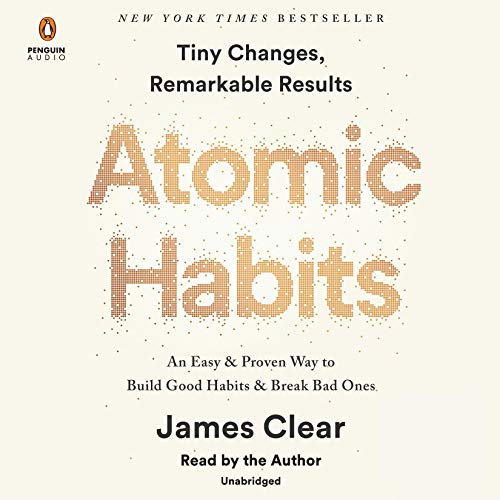
Introduction:
James Clear’s book “Atomic Habits” is a breakthrough work that goes deeply into the complexities of human behavior and habit formation. Published in 2018, it has quickly become a go-to resource for anyone looking to learn how to make long-term changes in their life. Clear makes a strong case for the transforming impact of modest habits, emphasizing small, incremental changes. In this book report, we’ll look at the core concepts and insights offered in “Atomic Habits” including a full study of the book’s contents and implications for personal development.
The book is organized into several sections, each covering an important aspect of habit creation and improvement. Clear begins by highlighting the significance of understanding the principles of habits, while also refuting popular myths and misconceptions. He then presents the concept of “atomic habits,” or modest modifications that produce astonishing outcomes over time. Throughout the book, Clear offers practical solutions and realistic suggestions for incorporating these atomic habits into numerous aspects of life, including as productivity, health, and relationships.
Listen to this book for FREE at Audible! Just search Atomic Habits and get the audiobook and many others with a free 30-day trial membership.
Section 1: The Basics of Atomic Habits
Clear begins by decomposing habits into their four constituent parts: cue, craving, reaction, and reward. He contends that a feedback loop forms habits, and that each element is essential to the process. People can acquire awareness of their conduct and make deliberate adjustments by comprehending the functioning of habits.
The idea of “habit stacking,” in which new habits are tied to preexisting ones, is one of the most important findings in this area. This tactic makes use of the association effect to facilitate easier and more long-lasting behavior change. In addition, Clear highlights the significance of identity-based habits and how conduct is shaped by one’s opinion of oneself.
Section 2: Make It Clear
In the latter portion of the book, Clear emphasizes how crucial it is to establish an atmosphere that encourages the development of habits. He highlights how important it is to make desired actions clear and simple to achieve. This entails figuring out the triggers that set off habits and creating an environment that encourages constructive behavior.
In his introduction to the idea of “environmental design,” Clear offers workable solutions for reshaping the real and virtual environments we live in. He provides practical guidance on enhancing surroundings for habit formation, ranging from eliminating obstacles to creating visual signals. Furthermore, Clear emphasizes how important habit tracking and responsibility are to preserving momentum and consistency.
Section 3: Make It Appealing
Clear examines the function of motivation in the development of habits in the third section. He contends that when habits are viewed as appealing and fulfilling, they are more likely to endure. In order to boost motivation, Clear presents the idea of “temptation bundling,” in which pleasurable tasks are combined with less desirable ones.
Furthermore, Clear talks about how social influence has a big role in determining behavior. He places a strong emphasis on the abilities of accountability partners and the community to promote healthy behaviors. People who surround themselves with similar people might use social norms to support the behaviors they want to see.
Section 4: Simplify and Provide Satisfaction
The book’s last section focuses on doable tactics for creating habits that are enjoyable to form and rewarding to keep up. Clear presents the idea of “habit shaping,” which divides actions into more manageable, smaller chunks. Through lowering the obstacles that impede the development of habits, people can improve their chances of success.
The need of instant pleasure in maintaining habits is another topic covered by Clear. He offers strategies to increase the short-term satisfaction of desirable actions, which will strengthen their long-term adoption. Clear also stresses the need of accepting failure as a chance for personal development and recognizing little victories.
Evaluate Critically:
“Atomic Habits” provides a plethora of useful advice and techniques for forming habits that are supported by empirical data and scientific studies. Because of Clear’s lucid, interesting, and approachable writing, difficult ideas are simple to comprehend and put into practice. Clear demystifies the process of behavior modification by emphasizing little, gradual adjustments, giving readers the confidence to take charge of their routines and, consequently, their lives.
The book’s emphasis on personal accountability and agency is one of its strong points. Clear contends that deliberate decisions and deeds lead to the formation of habits rather than predefined behaviors. He gives readers the power to take charge of their behavior and make good changes by redefining habits as a skill that can be learned rather than a fixed attribute.
Furthermore, Clear’s focus on the value of social support and the environment is consistent with behavior change studies. Research has demonstrated the importance of social norms and environmental cues in forming habits, highlighting the applicability of Clear’s recommendations. Clear gives readers the practical methods for making the most of their environment and utilizing social influence, giving them the resources they need to effect long-lasting change.
Though Clear’s method works well in most cases, it might not be appropriate for everyone. People who are experiencing considerable obstacles to change or who are seeking rapid transformation may not find resonance with the emphasis on little, incremental adjustments. Furthermore, even while Clear recognizes the influence of systemic elements like socioeconomic status and resource availability in determining behavior, his main emphasis is still on individual-level solutions.
Furthermore, because Clear reiterates important ideas frequently throughout the book, some readers could find his writing style redundant at times. Although this helps to emphasize key points, some readers may find it less enjoyable to read overall.
In summary:
James Clear’s book “Atomic Habits” is an engaging manual for developing new habits and improving oneself. Clear demystifies the process of behavior change by combining scientific ideas, useful techniques, and real-world examples. This empowers readers to make little, gradual adjustments in their lives. By emphasizing the principles of habit formation and offering practical guidance for execution, Clear gives readers the resources they require to bring about long-lasting transformation. Despite many drawbacks, “Atomic Habits” is a useful tool for anyone attempting to comprehend and become an expert in the field.


